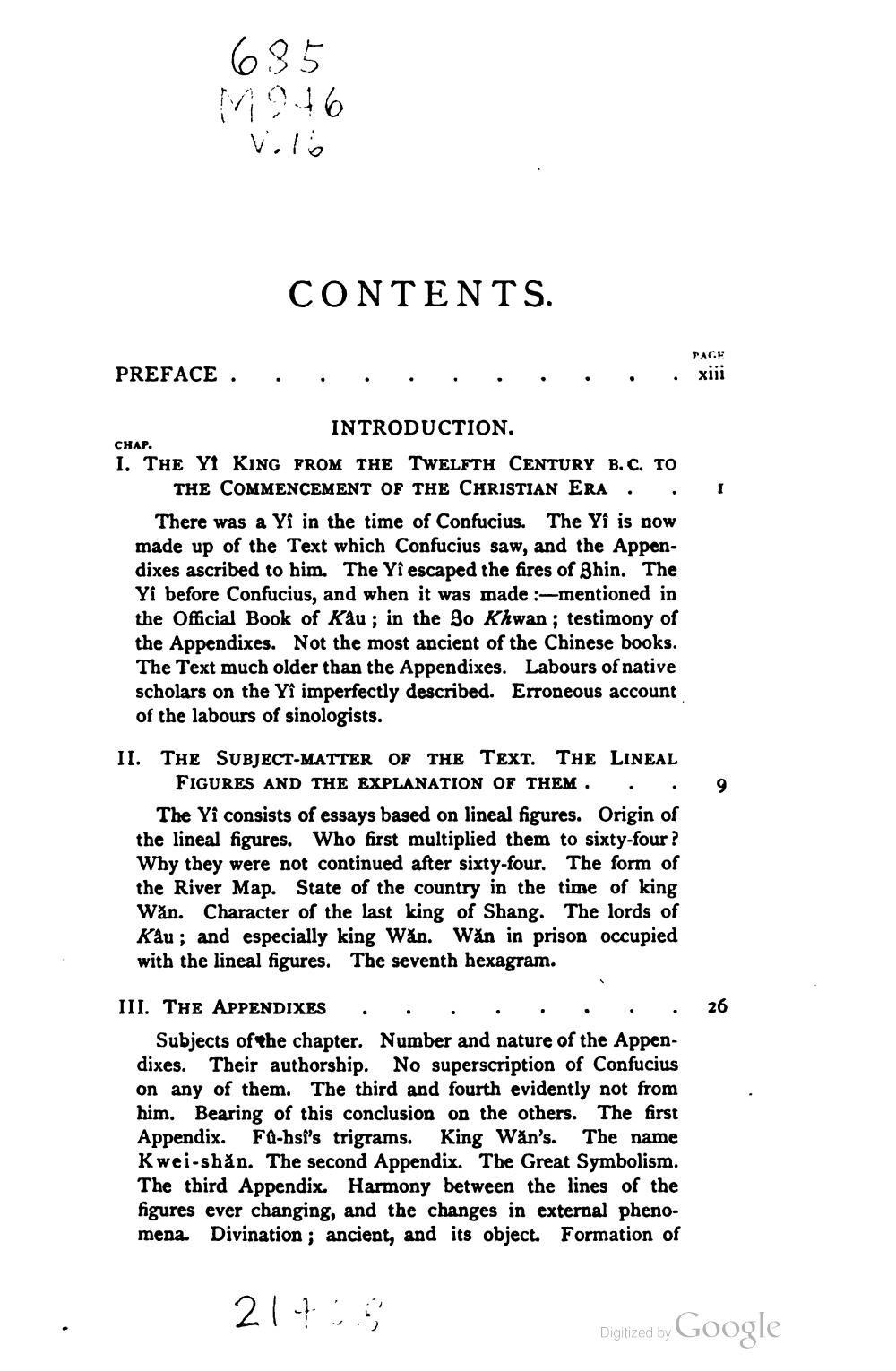________________
685 M946 Volo
CONTENTS.
PAGE
PREFACE
.
.
.
.
.
.
.
.
xiil
I
INTRODUCTION. CHAP. I. THE YI KING FROM THE TWELFTH CENTURY B.C. TO
THE COMMENCEMENT OF THE CHRISTIAN ERA . . There was a Yi in the time of Confucius. The Yi is now made up of the Text which Confucius saw, and the Appendixes ascribed to him. The Yi escaped the fires of Shin. The Yi before Confucius, and when it was made :-mentioned in the Official Book of Kâu ; in the 3o Khwan; testimony of the Appendixes. Not the most ancient of the Chinese books. The Text much older than the Appendixes. Labours of native scholars on the Yî imperfectly described. Erroneous account of the labours of sinologists.
9
II. THE SUBJECT-MATTER OF THE TEXT. THE LINEAL
FIGURES AND THE EXPLANATION OF THEM . . . The Yi consists of essays based on lineal figures. Origin of the lineal figures. Who first multiplied them to sixty-four ? Why they were not continued after sixty-four. The form of the River Map. State of the country in the time of king Wăn. Character of the last king of Shang. The lords of Kau; and especially king Wăn. Wăn in prison occupied with the lineal figures. The seventh hexagram.
26
III. THE APPENDIXES . . .
. . . Subjects of the chapter. Number and nature of the Appendixes. Their authorship. No superscription of Confucius on any of them. The third and fourth evidently not from him. Bearing of this conclusion on the others. The first Appendix. Fa-hsi's trigrams. King Wăn's. The name Kwei-shăn. The second Appendix. The Great Symbolism. The third Appendix. Harmony between the lines of the figures ever changing, and the changes in external phenomena. Divination; ancient, and its object. Formation of
217:5
Digitized by Google




